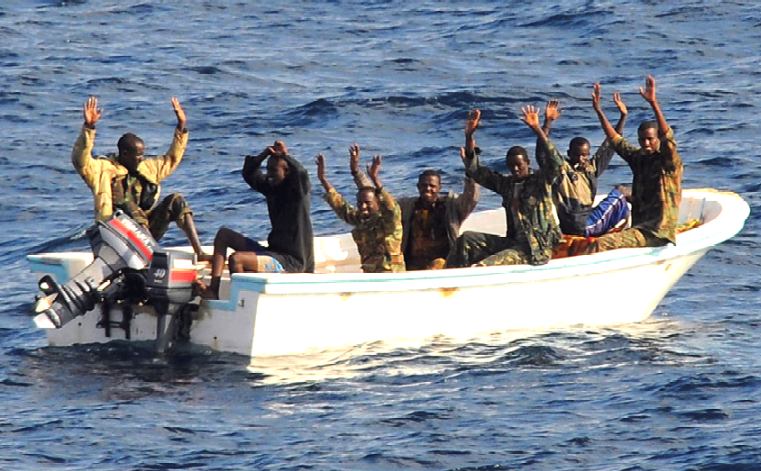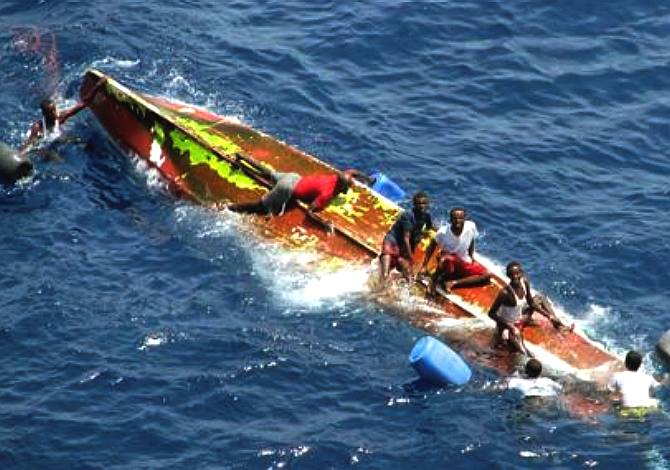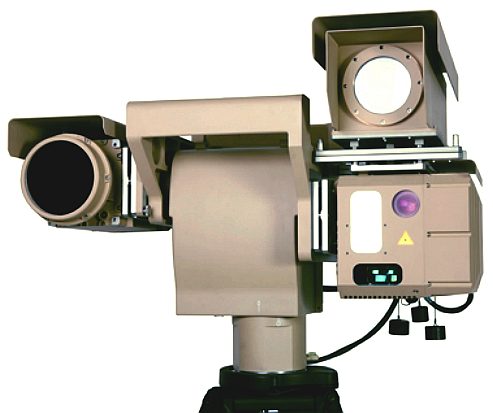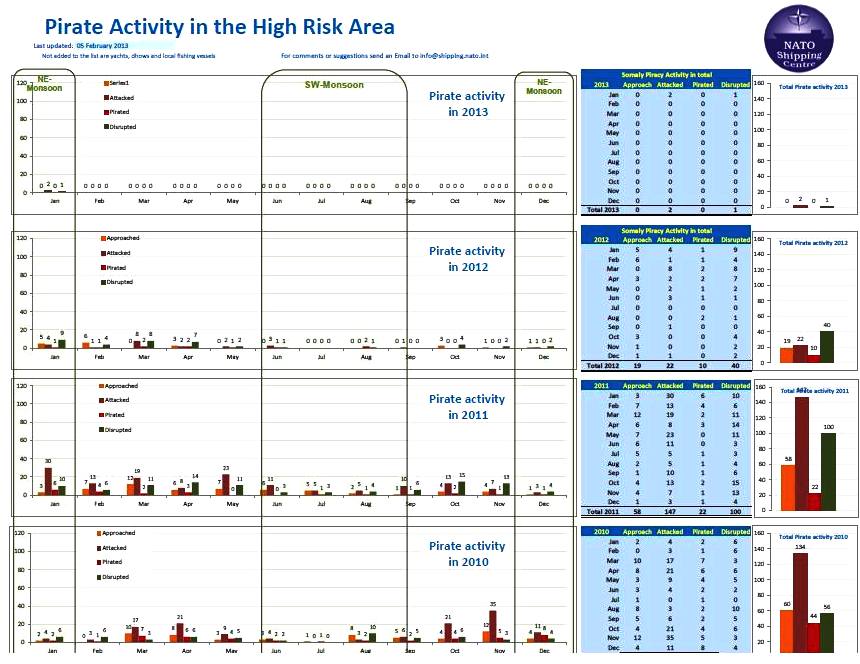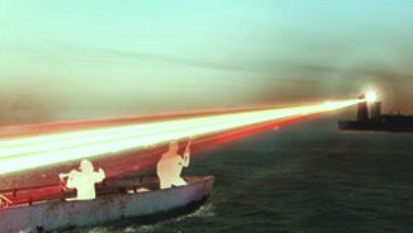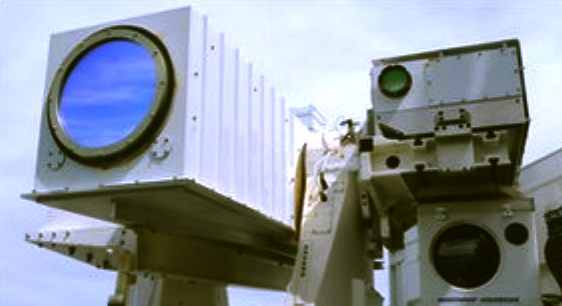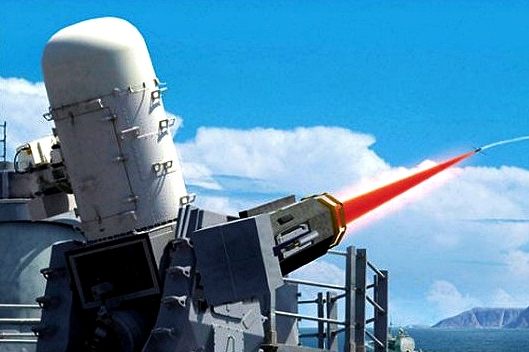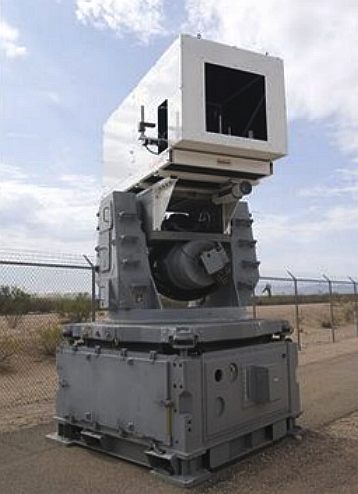|
SCORPION PATROL SHIP - SELF DEFENCE WEAPONRY
|
|||||||||||||||||||||||||||||||||||||||||||||||||||||||||||||
|
7. SCORPION - SELF DEFENCE ANTI (SOMALI) PIRACY SYSTEM
Scorpion is the sting in the tail of a SNAV platform where force is a last resort. Piracy on the high seas is a serious problem and the subject of ongoing NATO Operation Ocean Shield.
$Billions of dollars have been spent combating the pirate problem near the Horn of Africa, Somalia and in the Indian Ocean. This has involved the navies from several countries who have worked with NATO and the UN to set up dedicated military task forces over the past 10 years. But, there is never an escort about when you need one and the hostage count continues with demands for ransom money averaging around the $5 million mark. Let's face it, it's a huge international PROBLEM.
If you approach a ship looking like this (left) you deserve this (right) If you surrender (desist) - you may return home with a boat, which you could use for some honest fishing
SPECIFIC MARKET (CIVIL & MILITARY) APPLICATIONS -
METHOD - The patent SNAV hullform can be purpose designed to incorporate a system that progressively disables pirates, their weapons and boats, without intentional bloodshed. The system includes the following:
1. Constant threat detection (early long range warning electronic vigilance); 2. Threat identification (visual computer recognition, weapons & boats); 3. Arming the weapons (shields up, power up lighting); 4. Warning intruders to keep their distance (audibly), and if necessary; 5. Disarming intruders (sinking their vessel), which includes taking evasive action and: 6. Reporting the engagement to friendlies (automatic reporting to UN NATO alliance).
Should a Scorpion patrol ship be fired upon, the system goes immediately to the 5th stage. This is important, because pirates frequently carry bazookas and rocket propelled grenades (RPGs).
The technical details cannot be disclosed, but using lasers as weapons is nothing new. Previously, they were just too big and expensive and at the the moment (apart from ourselves) nobody is seriously considering developing them for this purpose. But then in the 1970s nobody could imagine CD drives using lasers cheaply, or LEDs for use as headlights or as a laptop dislay. It's down to how you use them and what developments are in the pipeline. At the moment lasers will only be supplemental to conventional weapons like: SAMs, Cruise Missiles and Torpedoes. In the future, who knows.
The iXBlue high definition long-range laser/optical targeting system
LASER PROS & CONS
AUTONOMOUS PATROLS - Autonomy is all about saving lives, making our oceans a safer place and that includes the pirates. Scorpion, could be the first marine weapon system that is Article 3 compliant in that the designer's and operators respect the Right to Life - even when threatened. Where a Scorpion ship is in part a peace envoy, it would send the wrong message to arm the vessel in such as way as to kill intruders.
A modern (medium output) solid state laser with the proper controls, makes it possible to sink a pirate boat without harming the pirates onboard. The same weapon can disable conventional guns, or brand a pirate with a barcode. Any member of a pirate party attempting to board a ship would be branded (humanely) and the attempted boarding video recorded, and transmitted in real time via satellite to a land based HQ. It's a bit like fingerprinting the aggressors at the scene of the crime for later identification in a court of law.
The SNAV Scorpion is probably the best boat in the world to demonstrate this technology, not needing generators to supply up to 50Kw of energy, which could in turn be multiplied before calculated discharges. Should pirates seek to threaten our ship and refuse to back down, then in addition to the above, their boat will be sunk and the pirates provided with the means to stay afloat until the next passing UN patrol can pick them up.
Scorpion is a robot weapon that could also be developed for land based peace keeping operation. First though, we need to build and test this system against pirates. Max Energy Ltd is looking to collaborate with other researchers and hardware manufacturers worldwide. Please contact us today if this is of interest - details at the foot of this page.
PIRATE
DEFINITIONS - Suspicious Activity
constitutes any piracy related event that is suspicious enough to warrant consideration and sharing with the merchant shipping community, but does not have sufficient weight to constitute an approach, attack, or Pirated/Hijacked vessel.
a) discharging weapons fire against, b) making contact with, and/or c) having illegally boarded (but have not gotten control of both propulsion and steerage of) the merchant vessel.
SOLID STATE LASERS
Offensive applications at sea will most likely be dedicated to those missions where their precision, speed of light engagement time, adjustability and minimal collateral damage make them ideally suited.
Counter-sniper missions might be a good example. Offensive use at sea may also meet niche requirements, especially in sea-borne special operations where precision and stealth are more important than destructive power.
Because laser weapons have few moving mechanical parts and are constantly powered or reloaded by recharging their electrical energy stores, they can engage multiple targets very quickly, limited for the most part only by their ability to be supplied with fuel or electrical power or to dissipate waste heat. Shifting from one target to another involves only re-pointing and refocusing mirrors. Thus, the Scorpion systems could cope with multiple target engagements, such as with several pirate boarding parties.
The “stealth” characteristics of lasers also make them ideal sniper weapons. Unlike their portrayal by Hollywood, real laser weapons have no visible beam and have no sonic “report”, muzzle flash or recoil. Under most atmospheric conditions, the only way an enemy would know he was being engaged by a laser would be to see the effect on the target.
Scorpion uses low-power (sighting) lasers to establish the aim point for co-aligned high-power lethal force lasers. Once the aim point has been established, the operating program (while in autonomous mode) only has to energize the high power laser to neutralize a conventional weapon, or sink a small boat - the epitome of the sniper’s “one shot, one kill” motto.
The precision and adjustability of laser weapons could make them highly effective in counterinsurgency
or stability and support operations (SASO) where force must be applied carefully to
achieve a desired effect. For example, laser
Autonomous peace cruisers equipped with this function would constitute a serious deterrent to pirates. Once a pirate vessel is sunk, an autonomous cruiser would maintain visual contact with men in the water, providing feedback to allied forces (NATO) - and assurance to the pirates that a pick-up ship is on its way - so long as they remain passive.
The Scorpion system is not essential to the autonomous circumnavigation - and is a stand alone robotic function, but as funding allows, engineers may work on the concept with the aim of incorporation for the event. We will accept funding from military sources for this aspect of the SolarNavigator project.
HISTORY OF DEVELOPMENT OF LASER WEAPONRY 2008 - 2014
MARINE LINK DEC 11 2014
BBC NEWS APRIL 2011
The US Navy fired a laser gun from one of its ships for the first time in April 2011. Researchers used the high-energy laser (HEL) to disable a boat by setting fire to its Mercruiser outboard engines off the coast of California. Similar systems had previously been tested on land, but moist sea air presented an extra challenge as it reduces a beam's power. If you watch the video of this test firing, you may agree that as a weapon, it is not that convincing.
The navy said that ship-borne lasers could eventually be used to protect vessels from small attack boats. The US military has been experimenting with laser weapons since the 1970s. Early systems used large, chemical-based lasers which tended to produce dangerous waste gases. More recently, scientists have developed solid state lasers that combine large numbers of compact beam generators, similar to LEDs.
The US Navy system uses a Joint High Power Solid State Laser mounted on deck. Until now, much of the development of HELs has focused on shooting down missiles or hitting land-based targets. The latest round of tests showed its wider possibilities, according to Peter Morrison from the Office of Naval Research:
"This test provides an important data point as we move toward putting directed energy on warships.
"There is still much work to do to make sure it's done safely and efficiently," he said.
While a weaponised system would likely be restricted to military vessels, merchant shipping has also expressed an interest in laser technology. A gun which uses visible laser light to temporarily blind pirates was announced by BAE Systems in 2010 (see below). The technology is still being tested, ahead of a commercial launch.
Artist's impression of BAE's laser distraction system
BBC NEWS JAN 2011
Sailors may soon have a weapon in their battle against sea-borne raiders: an anti-pirate laser. BAE Systems has demonstrated its new laser system, which can temporarily blind would-be attackers. The system would prevent pirates from being able to aim their weapons at targets, BAE claims. But further safety testing is needed before such a system could be commercially deployed.
BAE said it has developed a low-cost laser distraction system that can travel through the sea air while being housed onboard a moving ship. At distances of between 1.2km (0.75 miles) and 1.5km (0.85 miles), the laser beam acts as a warning signal, letting the pirates know they've been spotted, said Brian Hore of BAE:
"Today's pirates tend to be opportunistic. If they know they've been spotted, they're likely to look for an alternative target," he told BBC News. To our mind that is not dealing with the problem, simply moving it to the less well able to defend themselves.
BLINDING LIGHT
At closer ranges, a green laser beam will dazzle pirates, making it difficult for the pirates to use weapons of their own, said Mr Hore. Green lasers - which have been shown to interfere with eyesight - have been used by the US military in Iraq and to temporarily blind targets.
The challenge has been to develop a system that can be used safely - but effectively - over long distances at sea, said Mr Hore. Weapons designed to cause permanent blindness are banned by a United Nations protocol.
BAE has conducted a series of optics experiments to demonstrate that its distraction laser operates within known safety limits, said Mr Hore.
Human tests would have to be conducted before the system is made commercially available, he added.
Any commercial system would see the laser cannon integrated with BAE's existing targeting systems.
This would allow it to adjust the intensity of the laser beam to account for the target's distance and atmospheric conditions, Mr Hore said.
The International Chamber Of Commerce's International Maritime Bureau said there were 430 pirate attacks worldwide reported last year, up from 406 in 2009.
HELs on board US navy ship
RAYTHEON JULY 2010
US firm Raytheon has unveiled its anti-aircraft laser at the Farnborough Airshow in Hampshire. The Laser Close-In Weapon System (CIWS) can either be used on its own or alongside a gunnery system. In May, the laser was used to shoot down unmanned aerial vehicles (UAVs) in a series of tests.
Raytheon said the solid state fibre laser produces a 50 kilowatt beam and can be used against UAV, mortar, rockets and small surface ships. The idea of using lasers as weapons has been around almost as long as the laser itself, invented in 1960.
Initially, the systems were chemical lasers, which get their power from a chemical reaction. They are very large pieces of equipment and are very fuel hungry, requiring a significant quantity of chemicals to drive them. The fuel is frequently toxic, requiring operators to don protective clothing.
Solid state lasers, in contrast, consist of a glass or ceramic material to generate a laser beam.
They are smaller, more compact and only require an energy input to generate the beam, although the energy required is still significant.
However, until recently, solid state lasers were not able to reach the same power levels as chemical lasers and so were not deemed suitable for military use.
Raytheon CIWS system Artist's representation of what the CIWS laser beam might look like if it were visible
LAST DEFENCE
Peter Felstead, editor of Jane's Defence Weekly, told BBC News that CIWS was the start of real world applications for military solid state lasers. "OK, so a UAV isn't armoured, nor is it flying fast, but as you can see from the video they shot it down in flames," he said. "That's the very beginnings of what we can expect to see as firms miniaturise their technology and make them more effective."
Speaking to BBC News, Raytheon Missile Systems' vice president, Mike Booen, said that the tests, performed in a maritime environment, were a big step forward for laser technology. "We've tied this into Phalanx, the US Navy's anti-missile defence system that links a multiple barrelled 20mm Gatling gun to a radar guidance mechanism.
"This system is already installed in many ships, both in the US and other Nato nations, such as the Royal Navy. It was a bad day for UAVs and a good one for laser technology”
Mike Booen VP, Raython Missile Systems: "It functions as the last line of defence, so if you can fit a laser onto it, you have a longer reach and an unlimited magazine, cause it keeps on throwing out photons."
Two problems that have dogged laser weapon development for some time are weather conditions and the target itself. Damp maritime air can absorb the laser energy before it reaches the target and - as developers discovered in the 1960s when trying to target Russian Mig aircraft - a reflective surface can negate much of the laser's effectiveness.
Mr Booen acknowledges this, but said that these problems could be overcome:
"Every material reflects, but you can overcome this with power; once you get over a certain threshold - measured in multiple kilowatts - then the laser does what it is designed to do," he said.
Mr Booen said that once a material started getting hot, it affected the reflective ability, making the target absorb more energy and eventually leading to its destruction.
LAND USE
In May, the firm knocked out a number of UAVs at the US Navy test range on San Nicolas Island off the coast of California. Although Raytheon would not give details of the height, speed and range of the UAVs, saying that data is "sensitive", it did say that the Navy wanted tests to be as realistic as possible, suggesting that the aircraft were behaving in the way military planners would expect them to.
"This is the first time a UAV threat has been targeted and neutralised in a marine environment," said Mr Booen. "On a ship, the laser can be mounted inside a ship and the beam fed up through fibre cables. "It was a bad day for UAVs and a good one for laser technology," he added.
The firm is also working on a sister land based system that can be used to target mortar and rocket rounds. "On land, it could be mounted in trailers so it has applications across the globe," said Mr Booen. Mr Felstead agreed, saying it could have "great capability" as a last line of defence in many situations. "There are numerous real world applications for a laser than can knock out airborne threats, especially mortars and rockets.
"Airbases in Afghanistan, the Green Zone in Baghdad or the border with Gaza and Israel could all potentially use something like this. "We're still some way off being able to take out an [Intercontinental Ballistic Missile] missile with laser technology, but we're on the path to that," he added.
Raytheon Phalanx laser mount - a chunky looking item
TUESDAY, MARCH 16, 2010
-
NorthGrum Solid State Laser Relocating to HELSTF In cooperation with the U.S. Army’s Space and Missile Defense Command/Army Forces Strategic Command, which operates the test range at White Sands Missile Range in southeastern New Mexico, BAE Systems has contracted with Northrop Grumman to relocate the Joint High Power Solid State Laser (JHPSSL) Phase 3 system from the company’s laser factory in Redondo Beach, Calif., to HELSTF. Field testing is expected to begin this year.
This laser will be integrated with the beam control and command and control systems from another Northrop Grumman-built system, the Tactical High Energy Laser (THEL), to provide the Army with the world’s first high-power, Solid State Laser Testbed Experiment (SSLTE), Northrop Grumman officials say.
The SSLTE will be used to evaluate the capability of a 100kW-class solid-state laser to accomplish a variety of missions. Those results will be the basis for directing future development of solid-state lasers as a weapon system.
Under the JHPSSL program, Northrop Grumman became the first company to reach the 100 kilowatt power level threshold for a solid-state laser. The achievement also included turn-on time of less than one second and continuous operating time of greater than five minutes, with very good efficiency and beam quality.
TUESDAY, JULY 22, 2008 - FIBER LASER BEAM COMBINING
Combining laser beams can boost power at the target far above that produced by a single laser. Incoherent beam combining achieves propagation efficiencies of greater than 90%, while avoiding the complexities of coherent or spectral beam combining.
PHILLIP SPRANGLE, ANTONIO TING, JOSEPH PEÑANO, RICHARD FISCHER, AND BAHMAN HAFIZI
Incoherently combining the beams from multiple high-power fiber lasers has a number of advantages over other beam-combining methods, and can result in compact, robust, low-maintenance and long-lifetime high-energy laser systems. In initial experiments, we have combined the beams from four lasers with a beam director consisting of individually controlled steering mirrors. We achieved propagation efficiencies greater than 90% at a kilometer in range, with a total power of 2.8 kW on a target with a 10 cm radius.
RETURN TO MAIN AUTONOMOUS MENU
2. BRUCE THE AUTOPILOT & A BIT MORE 3. STAR WARS - DRONE SATELLITE REMOTE CONTROL, MANUAL OVERRIDE 4. HAL COMPUTER HARDWARE 6. THE EYES AND EARS - HAWKEYE 7. SELF DEFENCE - SCORPION 8. CAPTAIN NEMO - AI ROBOT 9. LOCAL NAVIGATION EVENT 10. INTERMEDIATE CIRCUMNAVIGATION 11. THE AUTONOMOUS CIRCUMNAVIGATION 12. SNAV MARINE HIGHWAY CONTROL
LINKS & REFERENCE
http://www97.homepage.villanova.edu/hashem.ashrafiuon http://www.bbc.co.uk/news/technology US navy fires laser at mercruiser http://www.bbc.co.uk/news/technology BAE Systems Lasers to blind pirates http://www.bbc.co.uk/news/technology-Raytheon Anti Aircraft Laser http://www.military.com/features/0,15240,194974,00.html http://gawker.com/5318666/navy-wants-laser-death-rays-to-fight-somali-pirates-wtf http://panafricannews.blogspot.co.uk/2011/04/us-navy-turns-laser-weapons-on.html http://funkensprungnuts.wordpress.com/2012/06/01/robot-ethics-morals-and-the-machine/
NOTE: We get no help from Europe, Canada or any other fund for the development of sustainable technology - such as those above. Funding from such organisations is designed to keep present market conglomerates and monopolies in their positions of power.
|
|||||||||||||||||||||||||||||||||||||||||||||||||||||||||||||
|
This website is copyright © 2014 Electrick Publications. All rights reserved. All other trademarks hereby acknowledged and please note that this project should not be confused with the Australian: 'World Solar Challenge'™which is a superb road vehicle endurance race from Darwin to Adelaide. Max Energy Limited is an educational charity working hard to promote world peace.
|
|||||||||||||||||||||||||||||||||||||||||||||||||||||||||||||


